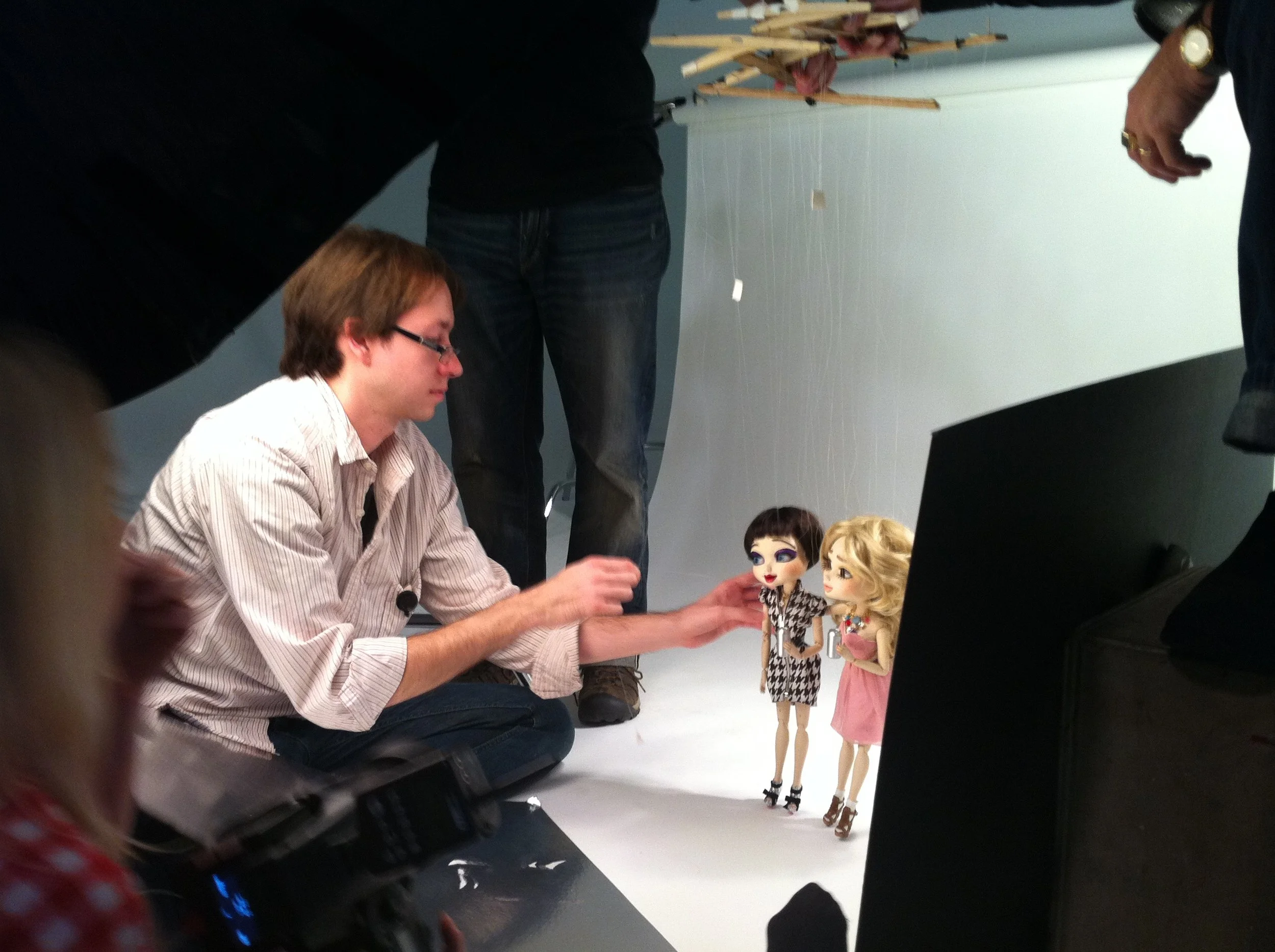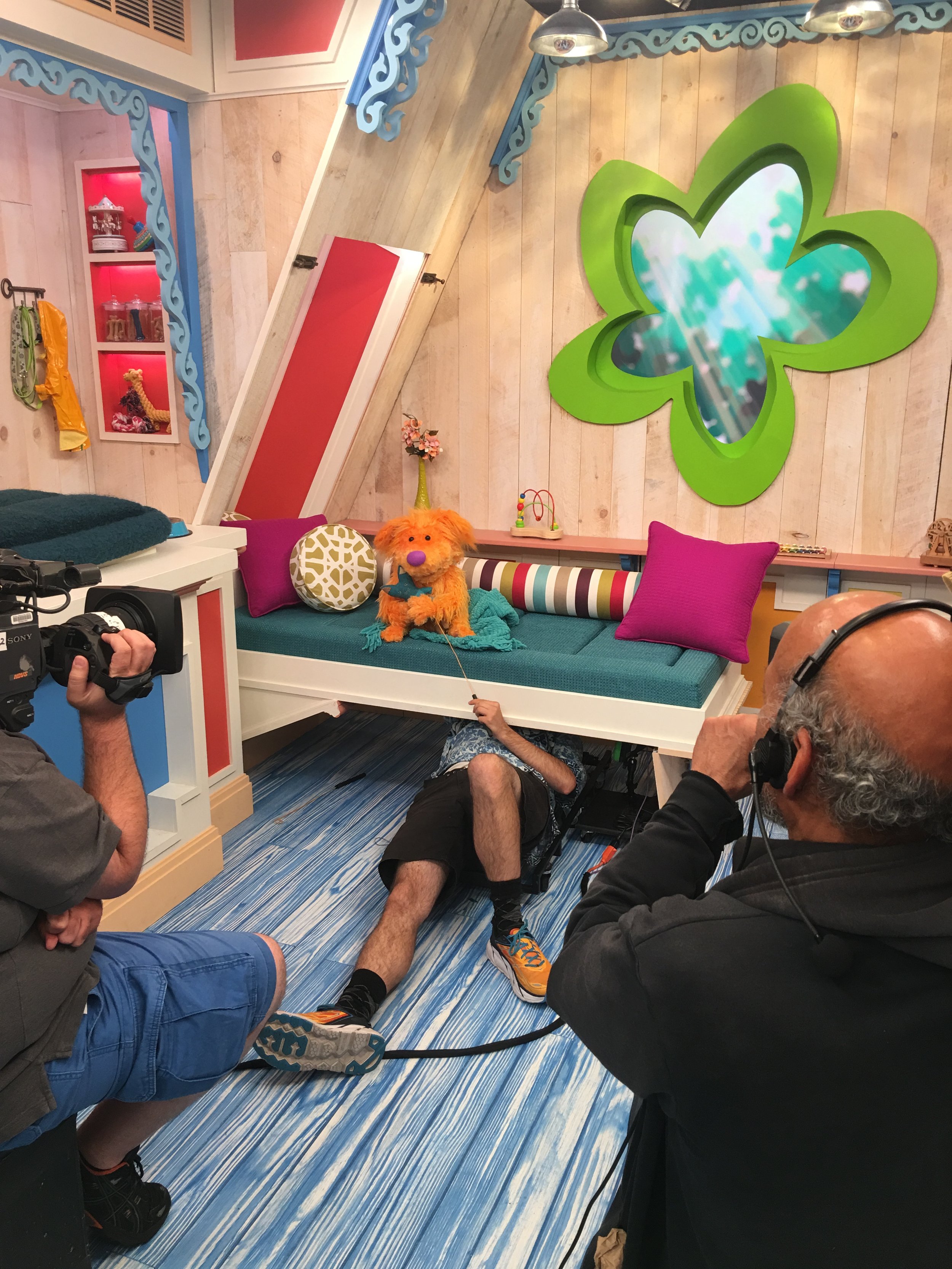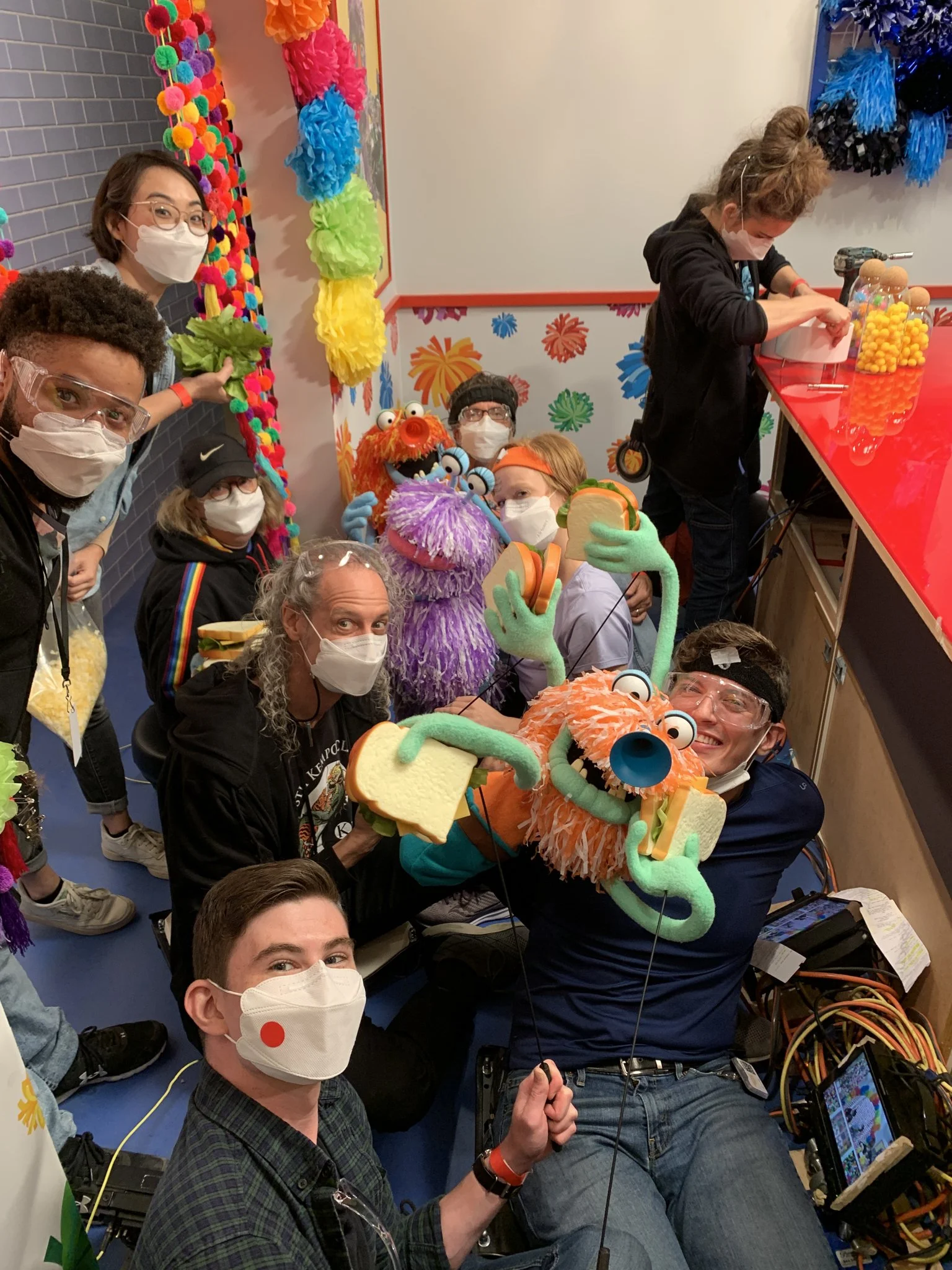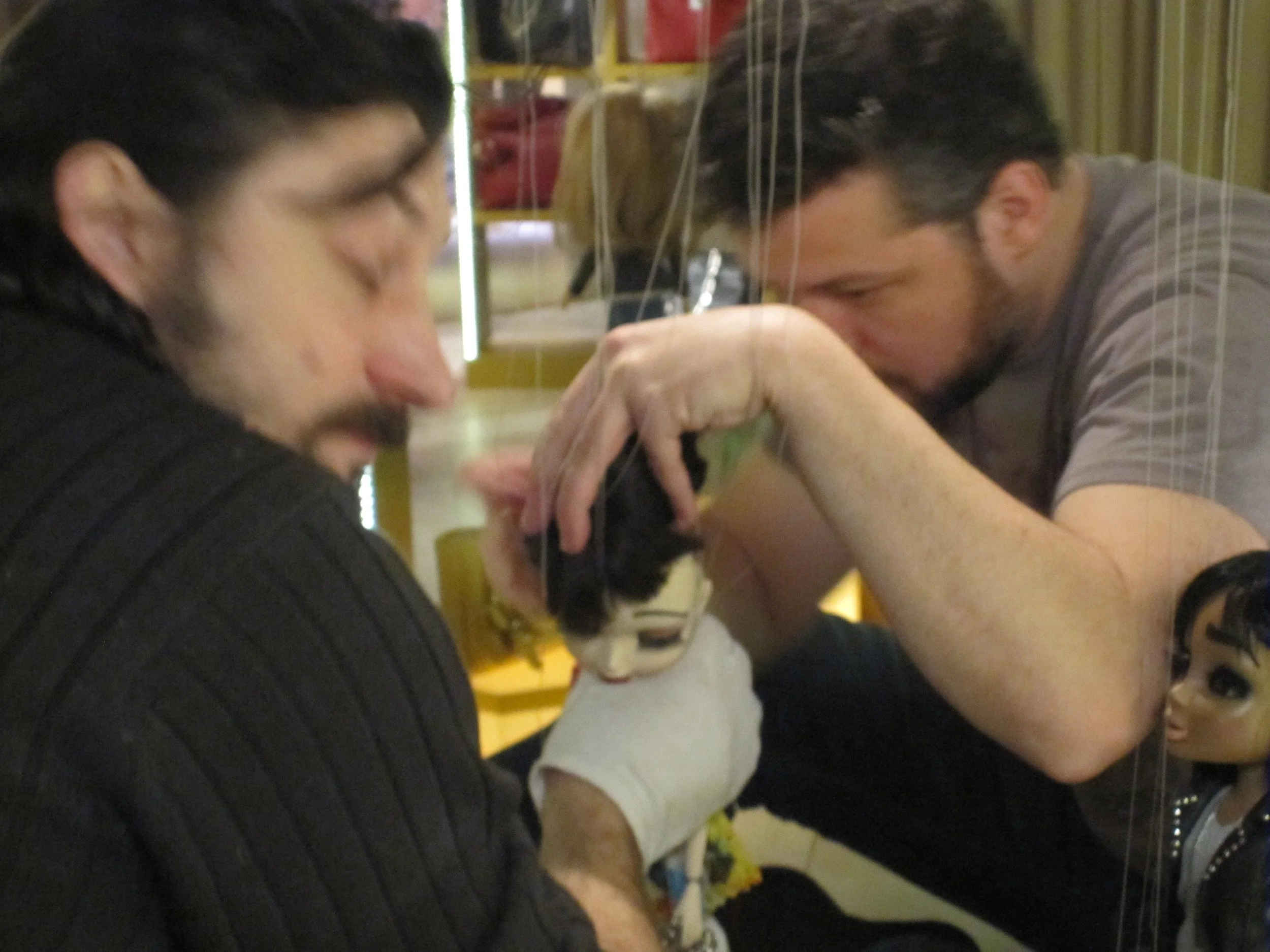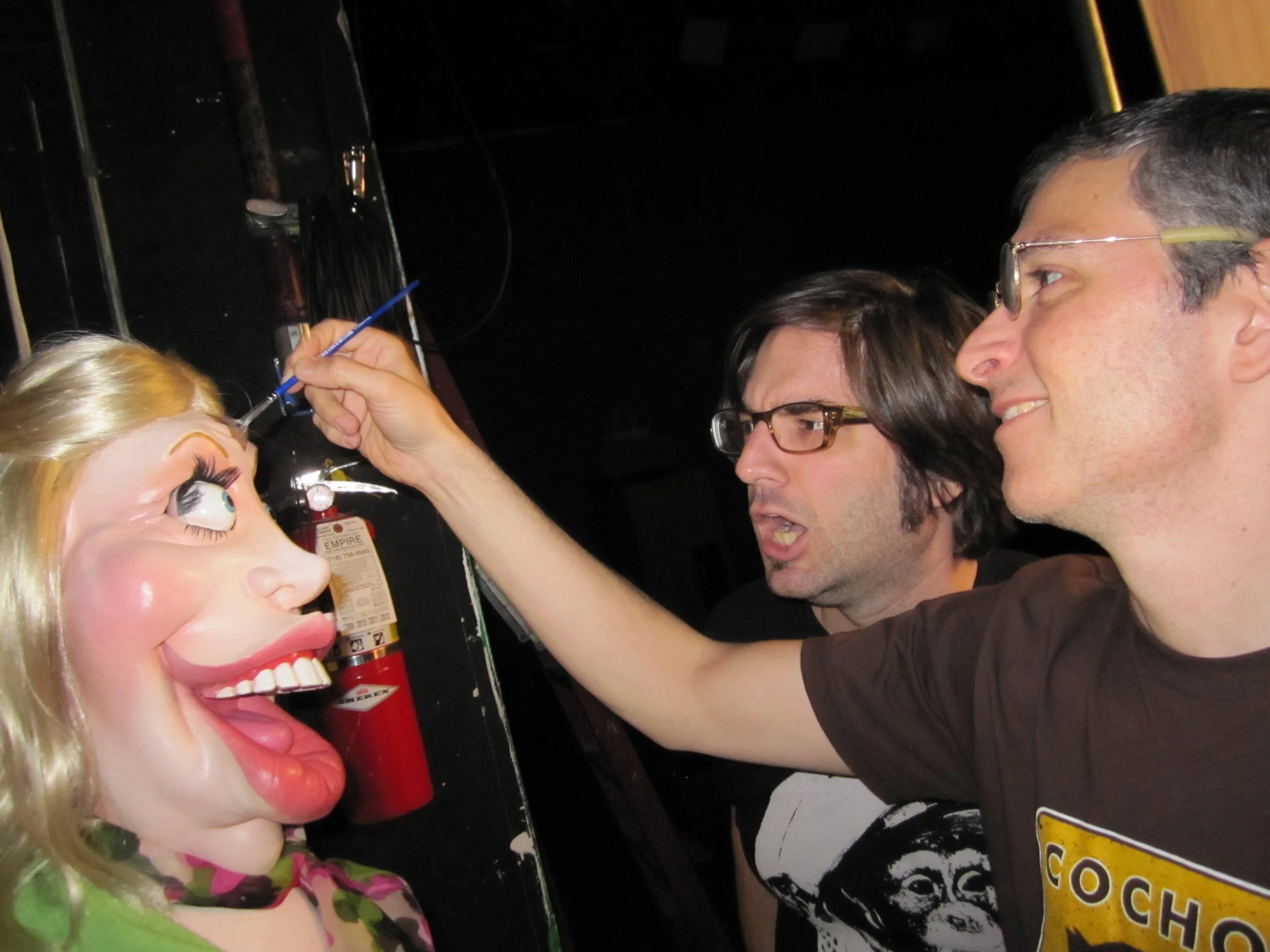What the heck is a “Puppet Wrangler?”
At Puppet Heap, we are a full-service puppet production company. From page to stage (or screen, or even in your neighborhood town square) we cover it all—iconic character design, crafting amazing puppets large and small, performance, and staging. It really takes the participation of every aspect of the production to bring the illusion of puppetry to life. And the glue that binds all those aspects together is an expert team of puppet wranglers. What the heck is a puppet wrangler? I’m glad you asked…
Puppet Artist Michael Bush prepping Eleanor for the shot during the Diet Coke: Love it Lite production.
What Does a Puppet Wrangler Do?
For those new to puppetry, the role of puppet wrangler can seem luxurious, almost silly. I mean, can’t the performers handle their own puppets? You might think so until you see them get into position for a shoot. It’s common for puppeteers to assume all sorts of awkward positions in order to hide themselves from camera. If you’re, say, shoving your arm up through a hole in a couch where the puppet is supposed to be sitting, well, it’s not possible to do that without someone there to help. And that is just the very tip of the iceberg. Who decided where that hole needed to be cut? How big? At what angle? And who even thought of coordinating with the production crew that it even needed to happen in the first place? The wrangler. And this is a very simple example. Everything a puppet appears to do--from picking up a pencil to parcour through a gulag-- is a carefully considered illusion created by the collaboration of the director, the cameraman, the set and props departments, and the performer--all facilitated and orchestrated by the puppet wrangler. Wranglers are essential members of any production incorporating puppets. They aren’t just there to “handle” puppets—they’re expert puppeteers who ensure that every aspect of the puppet process, from script to screen, goes off without a hitch.
Typical day at the office.
It takes a village.
Here are some of the key responsibilities of a puppet wrangler:
Pre-Production
Wranglers attend creative meetings, rehearsals, and script read-throughs, offering guidance on puppet actions, staging, and any potential logistical challenges. The wrangling team is often comprised of puppet builders and performers who are usually involved in the design and fabrication of the puppets from the very start of the project.
Script Breakdown
Wranglers work with the production team to break down each intended scene, shot, and motion to ensure that the production is prepared for every action the script calls for—and also those that it does not!
On-Set Support
Puppets don’t move themselves, so wranglers are there rig the puppets, change and secure their costumes between shots, prepare special props that the puppets can appear to manipulate, and keep a close eye on continuity from shot to shot, ensuring everything runs smoothly throughout the shoot as if the puppet were any other actor on set.
Nate Wilson tunes the mini animatronics in Eleanor’s head.
Performance Assistance
Wranglers will often assist puppeteers to execute whatever the scene demands, ensuring that the puppet performs its actions seamlessly, whether it’s a complex movement or intricate emotional expression.
Equipment Management
Wranglers maintain all puppet-related gear, including rigs, mechanisms, rolling stools, etc. Wranglers come to set equipped for whatever the day has in store. Does the puppet need to perform low to the ground for that dolly shot? Your wrangler’s got a cart for that.
Puppet Maintenance & Styling
Puppeteer Tim Lagasse looks on in awe as wrangler Peter MacKennan touches up the make up of a puppet between takes.
From spot repairs to styling and costume changes, wranglers keep the puppets looking great.
Advisory Role
Wranglers contribute to the overall creative direction, advising on staging, props, and camera angles to ensure the puppets integrate seamlessly with the broader production.
Marketing & Media Support
Wranglers can also assist with promotional work, including b-roll, photoshoots, and public-facing content like meet-and-greets or behind-the-scenes footage.
Why Having a Wrangler Matters
Puppet Wranglers are problem solvers.
Their knowledge of the mechanics of puppetry, performance techniques, and production logistics allows them to bridge the gap between departments, ensuring that everything comes together flawlessly.
Wranglers save time and money.
Nothing is more costly than time on set. The first priority of any good wrangler is to avoid delays due to puppet prep or malfunction. Whether they’re performing emergency repairs, offering solutions, or managing the technical mechanics of the puppet in the shot, their expertise helps keep the production moving right along, avoiding costly delays and keeping the creative vision intact.
Wranglers make the impossible possible.
Experienced puppet wranglers work with inanimate objects in performance every day and can contribute creatively to the production to offer possibilities you might never have imagined.
In short, Puppet Wranglers make your show better.
DID YOU MISS FEBRUARY’S HEAP NEWSLETTER? Please sign up to be on our mailing list and get behind the scenes, inside scoop and special discounts HERE
